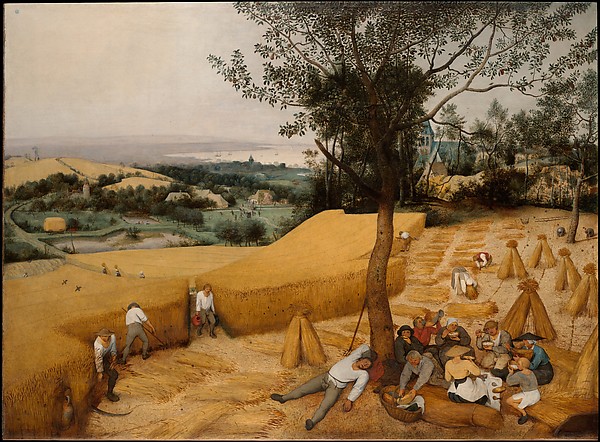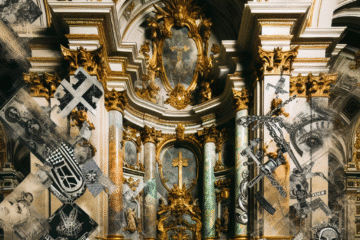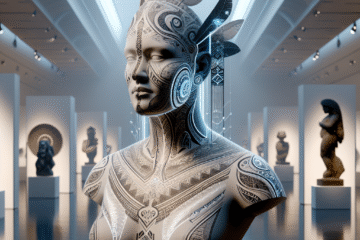
“
The art challenges the technology, and the technology inspires the art.
”
— John Lasseter
The Algorithm Curates You: How Data Shapes Art in the Digital Age
Introduction: Art Meets Algorithm
In an age when browsing history quietly anticipates our next impulse and streaming platforms cue up our perfect playlists, the world of visual art is being reshaped under similar computational forces. Museums, those long-standing bastions of culture and quiet reflection, are increasingly turning to data analytics and AI-driven personalization to curate exhibitions that resonate with individual tastes. The age of the algorithm curator is here, and it raises profound questions about autonomy, cultural representation, and the very essence of aesthetic experience.
Chapter 1: From Cabinets of Curiosities to Curated Calendars
The concept of curated art experiences has evolved dramatically since the Renaissance era, when cabinets of curiosities—or “Wunderkammern”—housed eclectic objects without clear thematic linkage. Art curation, in its modern sense, took form in the Enlightenment when museums began organizing collections by chronology, geography, or artistic movement. These institutions established not just what art was seen, but who was considered worthy of study. In these eras, curatorial decisions reflected the dominant cultural narratives of empire and progress.
Now, as we move from chronological curation to algorithmic customization, we’re witnessing a paradigm shift. No longer is the curator merely a scholar or gatekeeper; it might now be a neural network designed to enhance visitor engagement metrics or optimize ticket sales.
Chapter 2: Techno-Aesthetics in the 21st Century
Contemporary museums are integrating predictive algorithms and visitor data to shape exhibitions, often in real time. Institutions like the Cooper Hewitt Design Museum in New York allow visitors to use digital pens to collect information about artworks that appeal to them, building personalized digital notebooks. On the backend, this data helps the museum refine future displays and marketing strategies.
Through RFID tracking, AI-analyzed heat maps, and behavioral analytics, institutions gain unprecedented insight into audience preferences—including how long someone gazes at a painting, the emotional feedback they display, even biometric data. The museum becomes a responsive, adaptive organism, curating in dialogue with the viewer’s subconscious preferences. But who is ultimately in control—the viewer or the code?
Chapter 3: Taste Engineering or Empowerment?
This shift toward personalization invites a fundamental philosophical debate: is curated content liberation or limitation? While we enjoy hyper-specific recommendations on streaming platforms, art exists in part to challenge, to provoke, and to introduce unfamiliar perspectives. If an AI suppresses works unlikely to attract attention based on past user behavior, what vital, dissenting, or marginalized voices are being silenced?
This dynamic is not unlike the concept of the ‘filter bubble’ in digital media, where algorithms insulate users from dissenting viewpoints. In the art world, this may translate into an echo chamber of aesthetic preferences—art reduced to serotonin hits and Instagrammable moments. The curated self curates its art, endlessly and comfortably self-reaffirming.
Chapter 4: The New Digital Colonialism
Even more troubling is how data-driven curation can perpetuate cultural inequalities. Museums leveraging AI may disproportionately draw from data-rich regions, often the Global North, which have greater access to technology and online interaction. This effectively centers Western art tastes and behaviors, marginalizing indigenous or underrepresented cultural expressions that may not produce as much data but are no less vital.
This results in a form of digital colonialism, where cultural visibility is dictated by data volume rather than historical or artistic significance. Just as early colonial museums plundered and selectively showcased artifacts, the digital museum risks reinforcing a new hierarchy—one based on engagement algorithms rather than curatorial ethics or scholarship.
Chapter 5: Art’s Future in the Feedback Loop
Despite these challenges, there’s a poetic possibility in this union of code and canvas. AI can democratize curation by surfacing neglected artists or enabling real-time, participatory exhibitions. Initiatives like the Tate’s ‘Recognition’ project, which uses AI to compare photojournalism and classic art, or the growing field of generative art that uses deep learning to create new visual works, show how technology can expand the horizons of what art can be.
The key lies in ethical deployment—transparency in how algorithms function, conscious diversification of data inputs, and human oversight to ensure artistic integrity. Perhaps the art museum of tomorrow is not a building with fixed walls, but a dynamic interface where visitors and algorithms co-create culture, each shaping and being shaped in return.
Conclusion: Our Place in the Curatorial Code
As art museums step further into the algorithmic age, we must ask ourselves: do we want to see what we already like, or what might transform our way of seeing? The digital tools available to curators today offer immense power and possibility, but their use demands careful balance. In this brave new cultural terrain, the machine might guide our gaze—but it is still up to us to look with curiosity, with doubt, and above all, with awareness.

Image description:
Screenshot of the curation page for the Scholia topic profile for COVID-19 (d:Q84263196), as of 2020-05-24, at the end of the Indian scientists datathon.
License:
CC BY-SA 4.0
Source:
Wikimedia Commons
Useful links:


